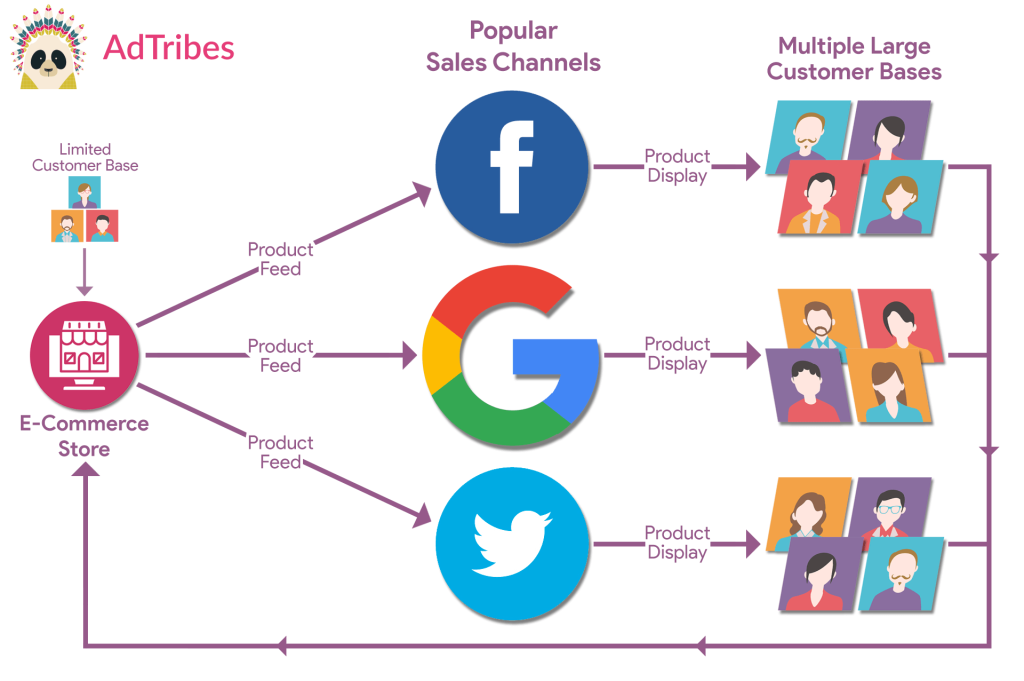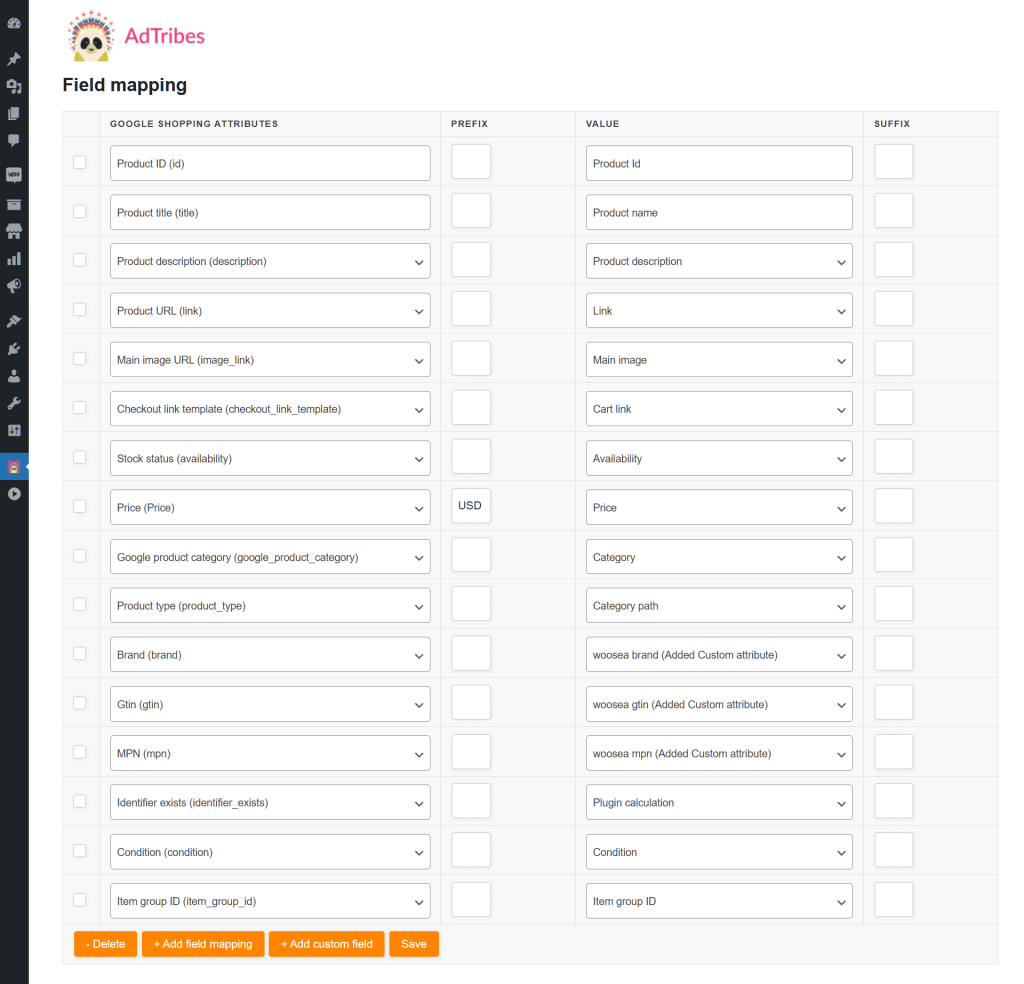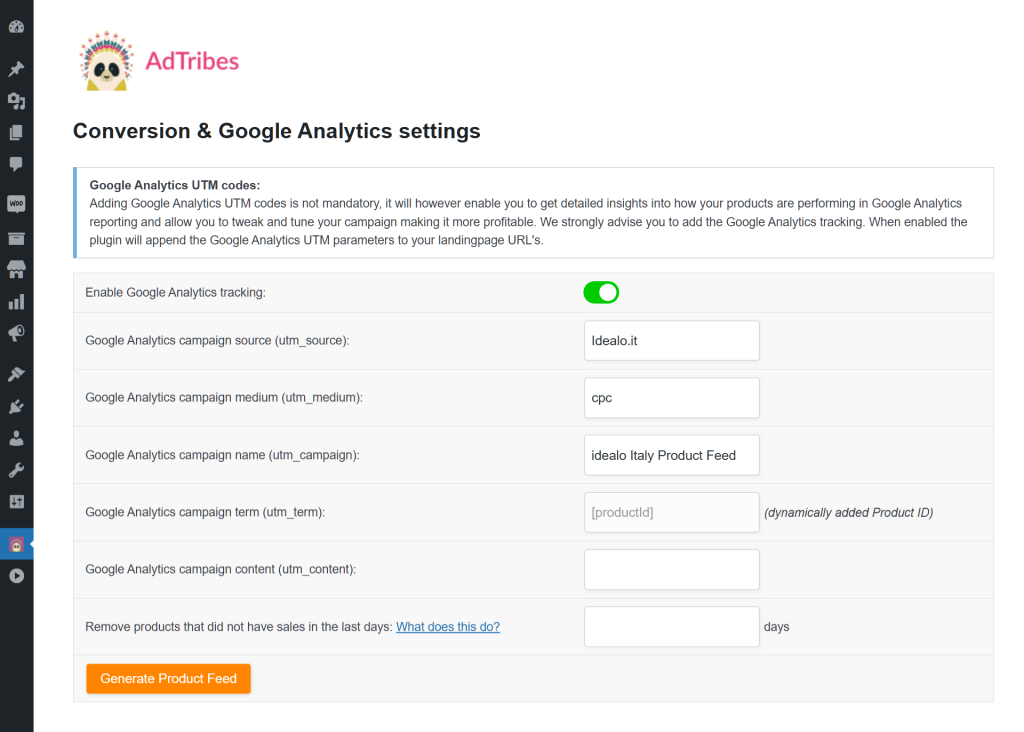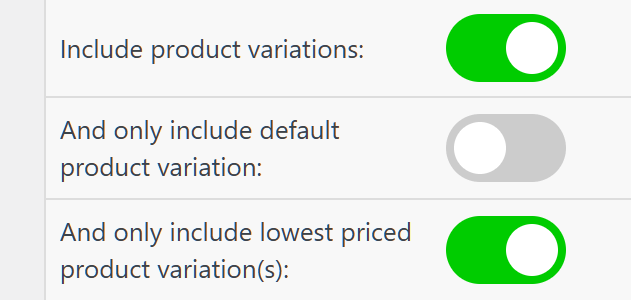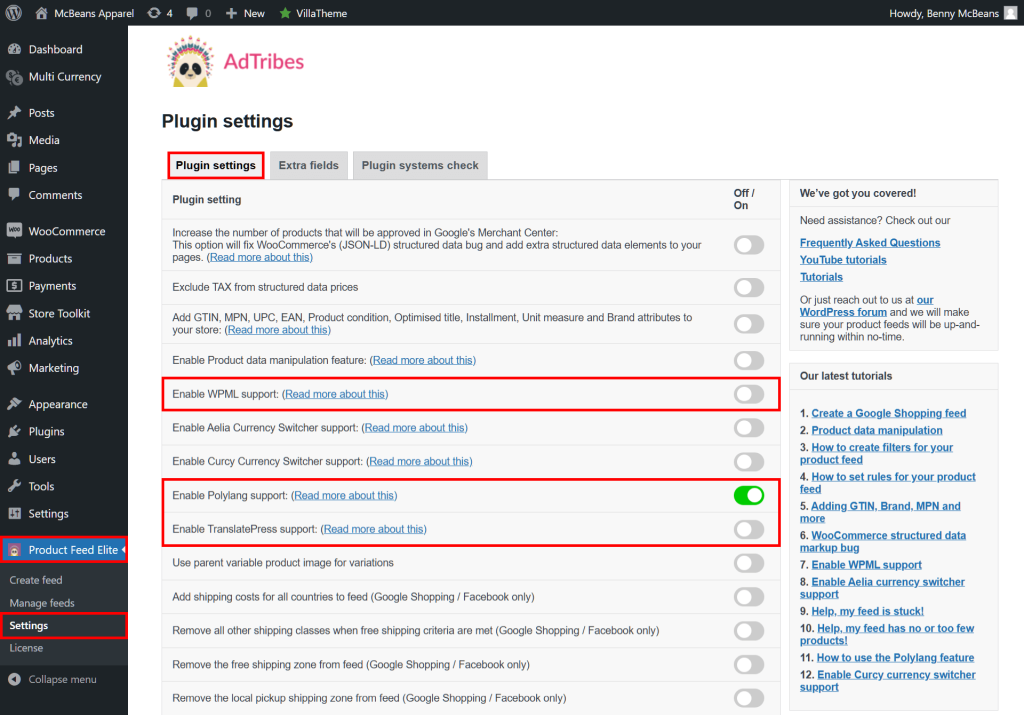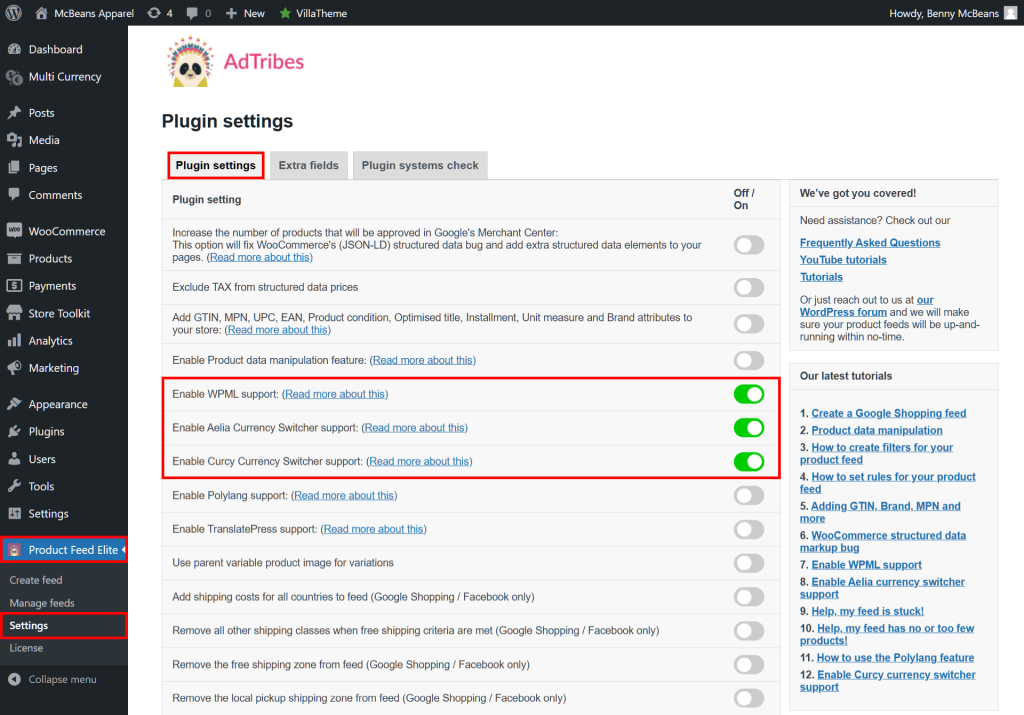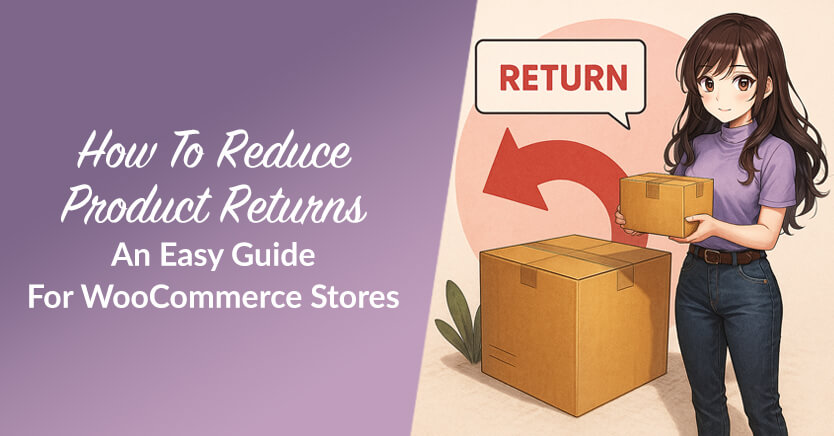
Knowing how to reduce product returns can save your WooCommerce store money and keep customers coming back. That’s because returns don’t just eat into your profits; they also take time to manage and can damage customer trust.
If you want to keep your store running smoothly and customers happy, it’s important to understand why returns happen and how to stop them. For this reason, this guide will show you simple ways to cut down on returns and keep your business growing, even when you’re selling across multiple channels.
So, excited to learn how to reduce returns? Then let’s get cracking!
- I. Why Product Returns Hurt Your Store
- II. What Causes Product Returns And How To Prevent Them
- III. How To Reduce Product Returns Across Sales Channels
- 1. Keep information accurate across sales channels
- 2. Include full product specs in feeds
- 3. Add return policy info in each feed
- 4. Match listings to the right audience
- 5. Update feeds regularly
- 6. Monitor feed performance
- 7. Use high-quality images in feeds
- 8. Highlight product variants clearly
- 9. Translate product info for each region
- 10. Use local currency in each feed
- Conclusion
I. Why Product Returns Hurt Your Store
The average product return rate for online orders is over 30%. This is alarming, given that product returns cause more trouble than most people realize. They affect many parts of your business, sometimes like a hidden leak.
Here are the main ways returns hurt your store:
- Returns cost money in shipping and restocking fees. After all, sending products back and getting them ready for sale again isn’t free.
- You lose the original sale when a customer sends a product back. That money is gone, and you might not get it again.
- Returns can damage customer trust, making buyers less likely to return. A tricky product return can feel like a broken promise.
- Managing returns messes up your inventory and stock counts. When products come back, your numbers might not match reality anymore.
- Sorting and processing returns takes time away from other tasks. Your team spends hours fixing returns instead of growing the store.
- Returns increase customer service workload, taking focus from growth. Answering questions and handling complaints slows down your progress.
- High return rates can hurt your store’s reputation and ratings. Too many returns make your store look unreliable to new shoppers.
- Returned products may be damaged or unsellable, causing losses. Not every return can be put back on the shelf like new.
- Processing returns delays restocking and slows future sales. Products tied up in returns aren’t available for new customers.
Even a small number of returns can cause bigger problems over time. Thus, if you want to keep your store running efficiently, you must learn how to reduce product returns as early as possible.

II. What Causes Product Returns And How To Prevent Them
To master how to reduce product returns, you must know what causes them.
Many returns happen for simple reasons. They often start with small problems that lead to big frustrations.
Here are the most common causes:
1. Wrong or confusing product descriptions
Product descriptions should help shoppers picture the item as if they were holding it in their hands. If your descriptions are missing key info—or worse, say something that isn’t true—people feel tricked.
Even a small detail that’s missing or inaccurate can cause confusion or frustration. And when customers are unhappy, they’re more likely to return your products.
Basically, if the reality doesn’t match what shoppers imagined, they’ll send it back.
Solution
When writing product descriptions, always be clear, honest, and accurate. Include all important details, like size, color, materials, and features. Use simple words that match what the product really is, and avoid vague phrases that can confuse shoppers.
Moreover, double-check your descriptions against the actual product. If possible, have someone else read them to catch any confusing parts.
The best descriptions help customers know exactly what to expect, which means fewer surprises and fewer returns.
Eager to learn how to write great product descriptions? Then check out the following guide:
How To Write Great Product Descriptions That Sell (Best Strategies)
2. Poor product images
Product images do most of the talking in an online store. After all, they reveal details that words can’t fully capture, such as the shape, color, size, and feel of a product.
Thus, if your photos are blurry or don’t show different angles, shoppers can’t trust what they’re seeing. Missing shots, like close-ups or how the item looks in use, leave too much to the imagination. That guesswork often leads to returns.
Remember: unclear photos make it easy for people to order the wrong thing without knowing it.
Solution
Good photos help shoppers feel confident about what they’re buying and reduce guesswork.
Thus, use sharp, well-lit images that show the product from multiple angles. Include close-ups of important details and shots of the item being used if possible. Also, make sure colors look true to life and the size is easy to understand, maybe with something for scale.
For these reasons, knowing how to reduce product returns includes improving your product photography skills.
If you’d like to know more about how to create excellent product images, read the following guide:
WooCommerce Product Image Gallery: How To Elevate Your Marketplace Showcase
3. Size and fit problems
This is one of the biggest reasons people return clothes, shoes, and gear. It’s hard to guess if something will fit just right when you can’t try it on.
If the sizing chart is confusing or inaccurate, shoppers may take a chance and end up disappointed. Even small differences in length or width can make something feel completely wrong.
To learn how to reduce customer returns, remember that they pile up fast when shoppers aren’t sure what size to pick.
Solution
Provide clear and detailed sizing charts. Include measurements in inches or centimeters, and explain how to measure properly.
If possible, add fit notes, like whether an item runs small, large, or true to size. Customer reviews that mention fit can also help shoppers decide.
The more info you give, the easier it is for customers to pick the right size and avoid returns.
4. Shipping damage or delays
Packages that get tossed around during shipping can arrive dented, scratched, or broken. When a product looks used or damaged, customers usually don’t want to keep it.
Delays can also cause returns. If an order arrives much later than expected, shoppers might cancel or lose interest altogether. Sometimes, late deliveries miss important events or deadlines, making the product useless.
Both damage and delays make customers lose trust in the store’s reliability, leading to more returns.
Solution
Pack orders with care. Use padding, sturdy boxes, and tape that holds up during transit.
Choose shipping carriers with a good track record. Offer tracking and realistic delivery times so customers know what to expect.
When packages arrive safely and on time, returns drop, and trust goes up. Keep this in mind when learning how to reduce product returns!
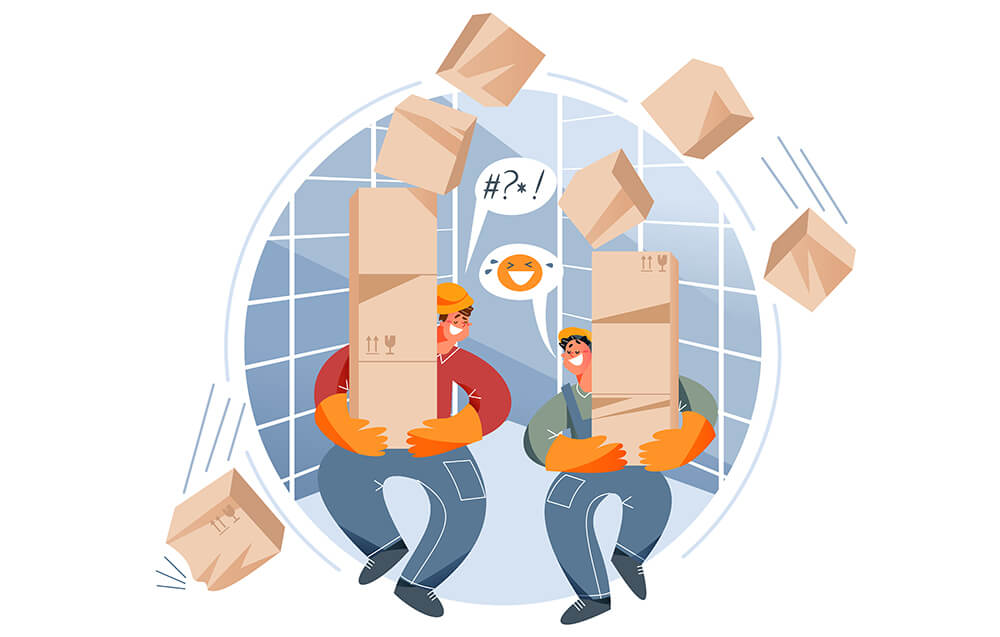
5. Product not matching customer expectations
Even when the product is exactly as described, it can still feel disappointing. Sometimes it looks different in real life than in photos.
Customers might expect something heavier, softer, or brighter. If the size, texture, or color doesn’t match what they imagined, it can lead to a return.
This mismatch often happens when product details aren’t clear enough or when customers make assumptions. When expectations don’t line up with reality, returns follow.
Solution
Most returns can be avoided with better product info and smoother delivery.
Therefore, be honest and clear in your product descriptions and photos. Show true colors and textures as best as possible. Furthermore, add extra details about weight, materials, and how the product feels. And if something varies a lot, mention it upfront to set the right expectations.
When customers know what to expect, they’re less likely to feel surprised or disappointed.
6. Poor quality or defects
Sometimes products come with flaws that aren’t easy to spot in photos or descriptions. A loose button, a scratch, or a part that doesn’t work right can all lead to disappointment.
Shoppers expect their purchases to last a reasonable time. When things break quickly or don’t work as promised, returns happen fast.
Quality issues make customers doubt the store and the brand. This often leads to more returns and lost trust.
Solution
Always check your stock before it ships. A quick look for scratches, loose parts, or packaging damage can catch problems early.
Therefore, work closely with suppliers or manufacturers to keep quality consistent. If issues keep popping up, it might be time to switch.
The fewer surprises your products have, the fewer returns you’ll deal with.
7. Complicated return policies
When return rules are hard to understand or too strict, customers can get frustrated. They might return items quickly just to avoid getting stuck with something they don’t want.
If policies are confusing or full of hidden fees, shoppers lose confidence. This makes them more likely to send products back, even if they might have kept them with clearer rules.
Solution
92% of customers stated they would make another purchase if returning products was a simple process. Thus, make your return policy easy to find and easy to read. Use plain language, not legal talk.
Be upfront about deadlines, conditions, and any costs. When shoppers know the rules, they’re less likely to rush into a return.
Clear policies help people feel safe buying and make it easier for them to keep what they ordered. Moreover, they build trust, further reducing unnecessary returns. This is a crucial lesson when you’re learning how to reduce product returns!
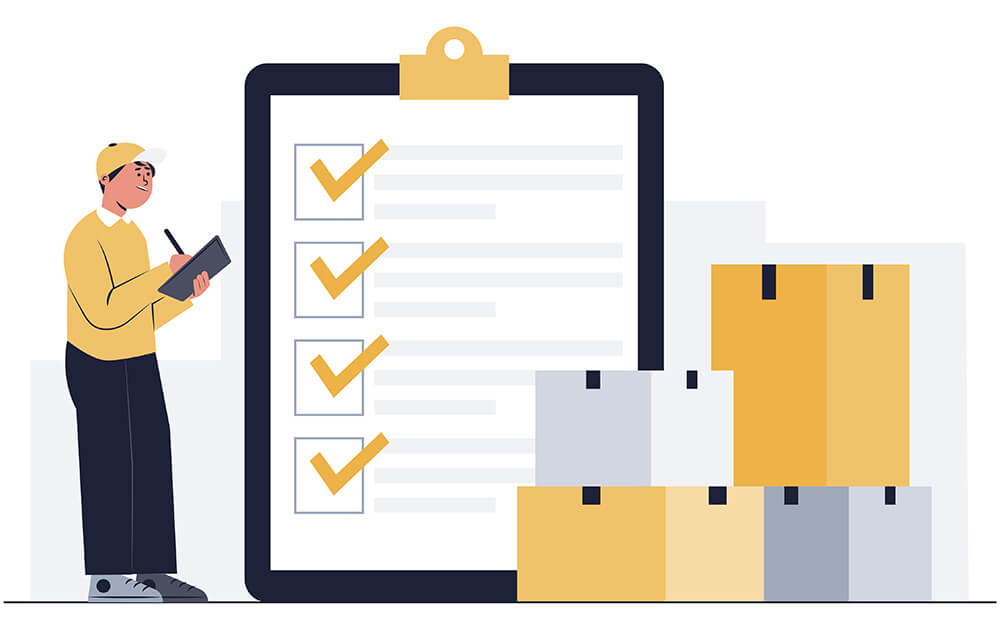
III. How To Reduce Product Returns Across Sales Channels
A great way to boost sales is to showcase your products on multiple sales channels. To do this, you need product feeds.
A product feed is a file containing detailed product information like titles, prices, images, and descriptions. Stores use product feeds to list items on multiple sales channels, including Google Shopping, Facebook, Instagram, and more. This helps you reach more people and drive more sales.
The more people buy your products, however, the more likely returns become. Thankfully, there are ways to prevent this from happening.
With that in mind, here’s how to reduce product returns by using product feeds:
1. Keep information accurate across sales channels
Imagine a customer seeing your product on Google, then seeing it on your website but with a different price. When product details don’t match across platforms like this, it’s like giving customers mixed signals. Basically, it’s like hearing two versions of the same story.
This can create confusion that makes shoppers second-guess their purchase. And when the product arrives, they’re more likely to send it back.
Therefore, when selling across various platforms, make sure your product titles, prices, descriptions, images, and other information are consistent everywhere. This way, shoppers know exactly what to expect—no surprises, no returns.
Remember, consistency builds trust. And trusted listings are less likely to get returned.
Take note that product feeds automatically sync your store data across platforms. Thus, you don’t have to change each one by hand.
2. Include full product specs in feeds
Including full product specs in your feeds helps customers know exactly what to expect. A short title and price aren’t enough. After all, people want details.
List things like size, dimensions, weight, and materials. For clothes, include the fabric type and care instructions. For tech, add compatibility, power needs, and warranty info. The more questions you answer up front, the fewer returns you’ll face later.
Think of it like giving shoppers a virtual feel of the product. When there are no surprises, there’s less reason to send it back.
3. Add return policy info in each feed
Adding return policy info to your product feeds can help stop returns before they even happen. It sets expectations clearly from the start.
Include how many days shoppers have to return something. List any restocking fees or conditions, like whether the item must be unopened. When people know the rules up front, they think twice before buying something they’re unsure about.
It’s like having store signs that say “no returns on sale items”—clear, simple, and prevents confusion. When learning how to reduce product returns, remember: honest return terms build trust and lead to fewer regret purchases.
4. Match listings to the right audience
Matching listings to the right audience means showing your products to people who really want them. When your ads reach the right shoppers, they’re less likely to return items because they already know what to expect.
For example, if you sell clothes, list your products on platforms popular for fashion shoppers. If you sell tech gadgets, focus on sites known for electronics. This way, your items reach buyers who are already looking for those kinds of products.
It’s like setting up shop where your customers usually hang out. When your products show up in the right place, people know what to expect and are less likely to return them. Remember this when learning how to reduce product returns!
5. Update feeds regularly
Product details don’t stay the same forever. Prices shift, items go out of stock, and new photos or specs might get added.
If your feed doesn’t update regularly, shoppers might see outdated info, like the wrong price or a product that’s no longer available. That creates confusion and frustration, which often leads to returns.
To avoid this, schedule your product feeds to refresh often. Thankfully, feed tools such as AdTribes let you set automatic updates, so your listings stay in sync with your store. That way, customers always see the most accurate details, no matter where they find you.
6. Monitor feed performance
Once your products are live, don’t just set and forget them. Keep an eye on how each listing performs across different platforms.
Look for patterns. For instance, if certain items keep getting returned, it could mean something in the feed isn’t right. Maybe the description is confusing, the price feels off, or the product is reaching the wrong crowd. By tracking performance, you can spot these issues early.
Then, tweak your feed. Update the images, rewrite the descriptions, or change the targeting. This helps stop unnecessary returns before they pile up.
Take note that the product feed manager AdTribes comes with full Google Analytics integration. This makes it much easier to track the campaign performance of your product feeds. An important point to consider if you aim to master how to reduce product returns!
7. Use high-quality images in feeds
Good photos help shoppers understand exactly what they’re buying. In a feed, your image is often the first thing someone sees, so it needs to show off the product clearly. Blurry or dark photos create doubt. But sharp, well-lit images from different angles build trust.
Include shots that show size, texture, and how the item looks in real life. Lifestyle photos also help set expectations by showing the product in use. This helps shoppers picture it in their own lives.
When images match reality, there are fewer surprises and thus fewer returns.
8. Highlight product variants clearly
Variants can cause confusion if not shown the right way. If someone thinks they’re ordering a black jacket but gets a blue one instead, that’s an easy return. In product feeds, every variant (like size, color, or model) should be listed as its own item or clearly shown as an option.
Include photos of each variant and double-check that the name and description match. If one red shoe looks like another but has a different fit, that difference needs to be obvious in the feed.
Clear variant listings keep carts accurate and customers satisfied. So, what’s one way to master how to reduce product returns? By remembering that shoppers who know exactly which version they’re choosing are less likely to send it back.
9. Translate product info for each region
Language gaps often lead to confusion. A shopper might misread a sizing guide or misunderstand what a product does. These small misunderstandings can turn into big disappointments once the item arrives.
In contrast, when shoppers browse listings in their own language, they feel more confident. They understand the product details clearly and don’t have to guess what something means.
In short, clear translations build trust and help people feel sure about their purchase. When they know what they’re getting, they’re more likely to keep it.
Fortunately, product feed solutions like AdTribes let you tailor your listings by region. Thus, you can translate descriptions, specs, and even usage tips. Basically, this helps set the right expectations and prevents returns caused by miscommunication.
10. Use local currency in each feed
When prices are shown in a foreign currency, shoppers often have to guess the real cost or calculate it themselves. That extra step can feel confusing or inconvenient, especially if exchange rates or hidden fees apply.
If someone thinks they’re paying less than they actually are, they might feel tricked once the payment clears. This kind of surprise often leads to cancellations or returns. It’s not just about money; it’s about trust.
The good news? AdTribes lets you show the correct local price for each region. This removes confusion and helps people feel more in control of what they’re spending. When pricing feels fair and transparent, customers are more likely to keep what they buy.
Conclusion
Learning how to reduce product return rates takes effort. However, it pays off in many ways.
Clear descriptions, good images, honest info, and smart product feeds help customers know exactly what to expect. When shoppers get what they want, they’re less likely to send things back.
To recap, this article explores the following concepts:
- Why a high product return rate hurts your store
- What causes the product return rate to increase, and how to prevent it
- How to reduce product returns across sales channels
Do you have any questions about how to reduce product returns? Let us know in the comments!


